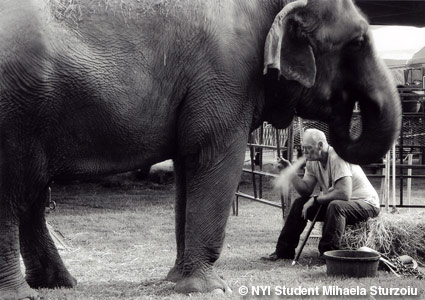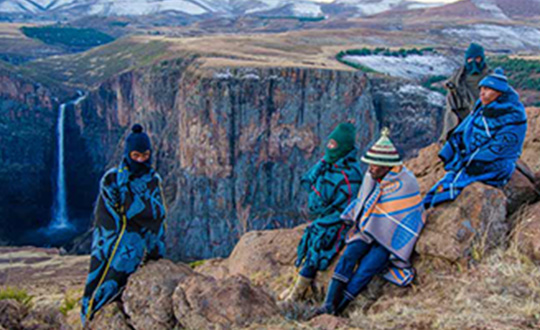Photo By NYIP Student Mihaela Sturzoiu

Perhaps the strangest creature on this planet is indeed man himself. His quixotic, unpredictable, unfathomable behavior has often puzzled the very man himself. And that often erratic action has produced a spate of professionals whose main jobs seem to be explaining man to his fellow man. Witness the long line of psychologists, philosophers, talk show hosts, and even stand up comedians.
The elephant, on the other hand, seems to be a fairly docile creature, relatively good natured chap (or chapette) that generally minds his or her own business. Occasionally, the elephant does run amok, trampling this year's crops into the mud and razing native villages in third world countries. But, for the most part elephants seem content to throw dirt all over their backs, wallow in the mud, hang on to each other's tail, and lift pretty ladies in sequined very brief costumes on top of the elephants' heads.
But let synergism take hold and, before you know it, the whole has suddenly become greater than the sum of the parts. Quicker than you can say Theophilus Thistle, the thistle sifter. For example, put man and elephant together, well, wow, just look at NYI's Picture of the Month! The photographer, NYIP Student Mihaela Sturzoiu of Edison, New Jersey has combined a manly mode of behavior with an elephantine elegance to make an exceptional photograph.
First, let us apply the first NYIP Guideline - strong subject matter. The elephant is quite possibly the most popular animal in the zoo, at the circus, on safari, what have you. Everybody seems to like elephants, certainly a whole lot better than tarantulas. And, as for man, some of them are well liked, too, e.g., Walter Cronkhite. So we can agree that the photograph shows strong subject matter – popular, appealing, generally understood, and so forth. How has Ms. Sturzoiu focused attention on her dual subjects? In other words, how has she applied the second NYIP Guideline? You have heard that opposites attract and we have powerful examples in this photograph. For instance, large and small, dark and light, man and animal, left looking man and right looking elephant, high and low, standing and seated, handler and his responsibility ( the care of the animal). Not only are there a number of opposites in the photograph but they are placed in juxtaposition; that placement makes the concept all the more obvious.

Now look first at the elephant's trunk. And now look at the man exhaling the smoke from his cigarette. Don't you think that the plume of smoke bears some resemblance to the elephant's trunk? Now look again at the elephant's trunk and notice the tear-dropped negative space formed by the loop of the trunk. It almost seems as if the pachyderm is shedding a massive elephantine tear for the poor benighted who doesn't seem to recognize the dangers of smoking; the elephant, of course, gave it up long ago, not wanting to stunt its growth. I suppose you could ask if the basin at the man's feet is either a drinking bowl for the elephant or a spittoon for the man. Or both? We teach the importance of framing in Unit Two of the NYIP Course. How perfectly the elephant's trunk frames the handler, is yet another way of focusing attention on the subject (the second NYIP Guideline). Finally, the picture is simplicity itself. Just the animal and the man, dual companions lost in their own reveries. The third NYIP Guideline at work. A fine photograph in every respect!






